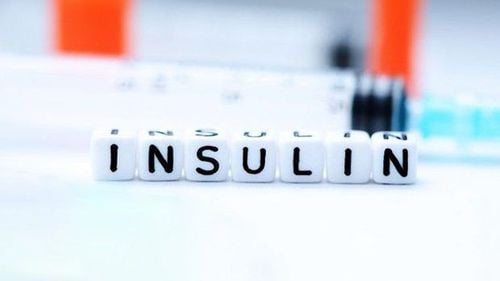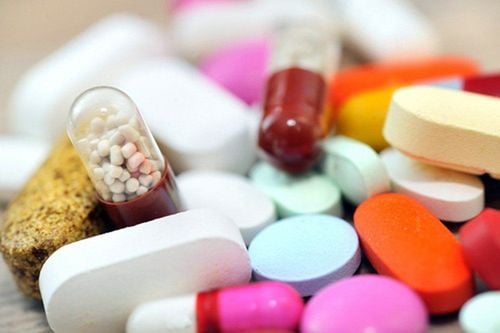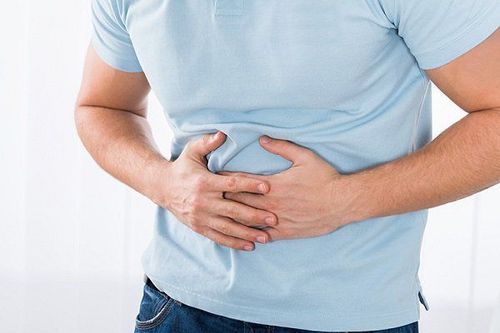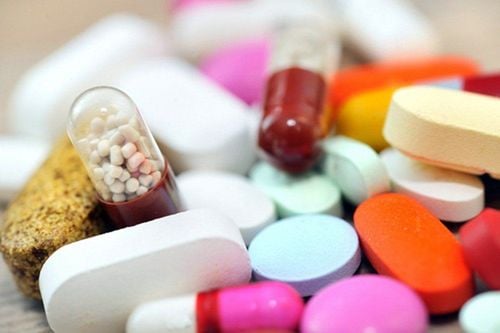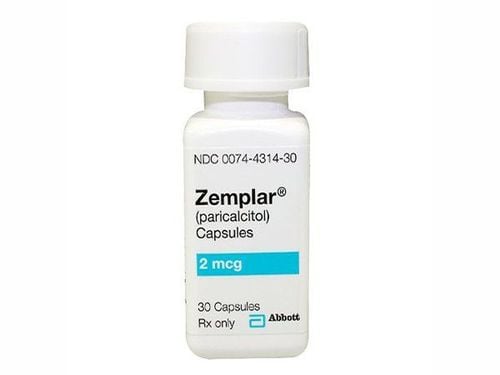This is an automatically translated article.
You need to have a kidney-friendly eating plan when you have chronic kidney disease (CKD). The information in this article is nutritional advice for patients with chronic kidney disease. This information should be used as a basic guide. Everyone has different nutritional needs, so talk to a kidney dietitian to find an eating plan that's right for you.1. Chronic kidney disease
Chronic kidney disease (CKD) includes a number of conditions that damage the kidneys and reduce their ability to perform normal functions. The main function of the kidneys is to filter the blood, removing excess fluid and unwanted chemicals into the urine. As kidney disease gets worse, these waste products can build up in the blood and contribute to many complications like high blood pressure, anemia, and weak bones. In addition, kidney disease significantly increases the risk of heart disease, with the risk of cardiac death being 2 to 3 times higher than that of people without CKD.The doctors added : Around 1 in 3 Australians are at risk of chronic kidney disease and 1 in 10 people in both Australia and New Zealand have indicators of CKD in blood and urine tests. Because 90% of kidney function can be lost before symptoms manifest, only 10% of people with chronic kidney disease realize they have the condition. This means that more than 1.5 million Australians and 400,000 New Zealanders are unaware they are likely to have chronic kidney disease. Prevention, early detection, and treatment are especially important for kidney disease because chronic kidney damage is often permanent, requiring dialysis or a transplant when they are completely damaged.
2. Nutrition for people with chronic kidney disease
2.1. Why is a specific eating plan important for patients with chronic kidney disease? What we eat and drink affects the health of our bodies. Keeping a healthy weight and eating a balanced diet low in salt and fat can help keep blood pressure under control. For people with diabetes, they can help control their blood sugar by choosing carefully what they eat and drink. Controlling high blood pressure and diabetes can help prevent kidney disease from becoming more serious.A kidney-friendly diet can also help protect your kidneys from further damage. The kidney-friendly diet restricts certain foods to prevent the minerals in those foods from building up in your body.
2.2. The basics of a healthy diet for chronic kidney disease With all meal plans, including a kidney-healthy diet, people need to monitor their intake of certain nutrients. such as:
Calories Protein Fats Carbohydrates To ensure adequate intake of this nutrient, patients need to eat and drink in the correct portions. All the information they need to track their intake is on the "Nutrition Information" label. Use the nutrition facts section on food labels to learn more about what's in the foods you eat. Nutrition facts will tell you how much protein, carbohydrates, fat and sodium is in each serving of your food. This can help you choose foods that are high in the nutrients you need and low in the nutrients you should limit. When you look specifically at nutrition, there are a few key areas that will give you the information you need:
Calories: Our bodies get energy from the calories we eat and drink. Calories come from protein, carbohydrates, and fats in the diet. How many calories a person needs depends on their age, gender, body size, and activity level. You may also need to adjust your calorie intake based on your weight goal. Some people will need to limit the amount of calories they eat. Others may need more calories. Your doctor or dietitian can help you figure out how many calories you should be consuming each day. Work with your dietitian to create a meal plan that helps you get the right amount of calories and stay in touch for support.

Với người bị bệnh thận mạn, việc thiết lập kế hoạch ăn uống là vô cùng quan trọng
Low-protein foods:
Breads Fruits Vegetables Pasta and rice Protein-rich foods:
Red meat Poultry Fish Eggs Chicken Carbohydrates: Carbohydrates ("carbs") are the easiest type of energy to use by the body. ta. Good sources of healthy carbohydrates include fruits and vegetables. Unhealthy sources of carbohydrates include sugar, honey, hard candies, soft drinks and other sugary drinks. Some carbohydrates are high in potassium and phosphorus, and you may need to limit them depending on the stage of your kidney disease. You may also need to carefully monitor your carbohydrate intake if you have diabetes. Your dietitian can help you learn more about the types of carbohydrates in your meal plan and how they affect your blood sugar.
Fat: Fat also plays an important role in our body. Fats give us energy and help the body synthesize certain vitamins in its food. But too much fat can lead to weight gain and increase the risk of heart disease. Try to limit fat in your meals and choose healthier fats when you can.
Healthier fats or “good” fats are also known as unsaturated fats. Examples of unsaturated fats include:
Olive oil Peanut oil Corn oil Unsaturated fats can help lower cholesterol. If you need to gain weight, try to eat more unsaturated fats. If you need to lose weight, limit unsaturated fats in your meals. As always, moderation is key. Too much "good" fat can also cause health problems.

Người bị bệnh thận mạn nên hạn chế chất đạm
Butter, Lard Meats Limit these in your meal plan. Instead, choose healthier, unsaturated fats. Cutting fat from meat and removing the skin of chicken or turkey can also help you limit saturated fat. You should also avoid trans fats. This type of fat causes "bad" cholesterol (LDL cholesterol) in the body to increase and "good" cholesterol (HDL cholesterol) to decrease. When this happens, you are more likely to develop heart disease or cause kidney damage.
Sodium: Sodium (salt) is a mineral found in most foods. Too much sodium can make you thirsty, leading to swelling and increased blood pressure. This can damage the kidneys even more and make the heart work harder. One of the best things patients with chronic kidney disease can do to stay healthy is to limit their sodium intake. To limit sodium in their meals, patients can:
Do not add salt to their food when cooking or eating. Try cooking with fresh herbs, lime juice or other salt-free seasonings. Choose fresh or frozen vegetables instead of canned vegetables. If you use canned vegetables, drain and rinse to remove the salt before cooking or eating. Avoid processed meats, such as ham, bacon, hot dogs, and lunch meats. Eat fresh fruits and vegetables instead of crackers or other salty snacks. Avoid canned soups and frozen dinners that are high in sodium. Avoid pickled foods, like olives and pickles. Limit condiments that are high in sodium, such as soy sauce, BBQ sauce, and ketchup. It's important to be careful with salt substitutes and "reduced sodium" foods. Many salt substitutes contain high levels of potassium. Too much potassium can be dangerous if you have kidney disease.
Portions: Choosing healthy foods is a great start, but eating too much of anything, even healthy foods, can be a problem. Another part of a healthy diet is portion control to see how much you eat. To help with portion control of patients with chronic kidney disease :
Check the nutrition facts labels on foods for servings and the amount of nutrients in a serving. Many packaged foods have more than one serving. Many raw foods, such as fruits and vegetables, do not have nutrition labels. Talk to your doctor or dietitian for a list of raw food nutrition facts and tips on how to properly measure portions. Eat slowly and stop eating when you don't feel hungry anymore. It takes about 20 minutes for the stomach to send a signal to the brain that you are full. If you eat too quickly, you may eat more than you need. Avoid eating while working, such as watching TV or driving. When you're distracted, you may not realize how much you've eaten. Do not eat directly from the package into which the food is placed. Instead, take a portion of the food out and put the bag or box away. Good portion control is an important part of any meal plan. It's even more important in your kidney meal plan, because you may need to limit the amount of some things you eat and drink.

Muối cũng nên được hạn chế trong thực đơn ăn của người bị bệnh thận mạn
Please dial HOTLINE for more information or register for an appointment HERE. Download MyVinmec app to make appointments faster and to manage your bookings easily.
References: webmd.com, kidneyfund.org, doctorsfornutrition.org



